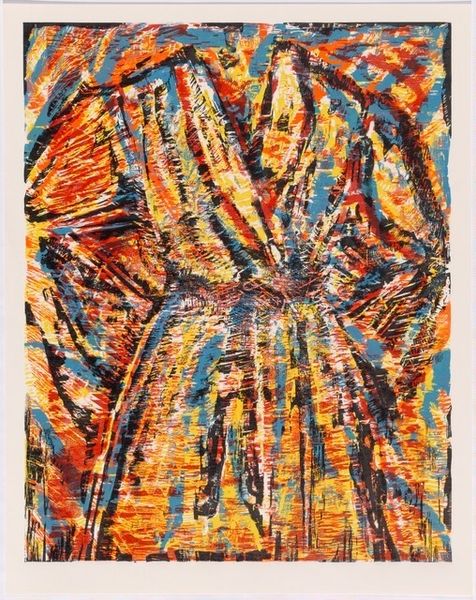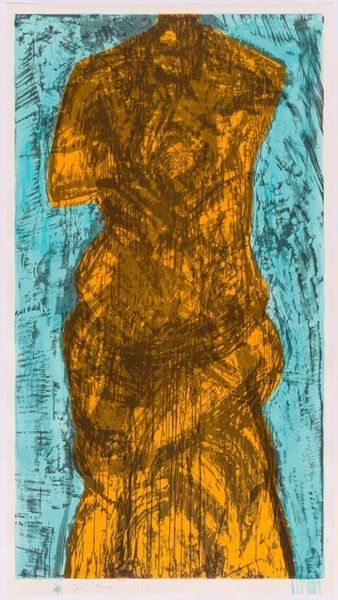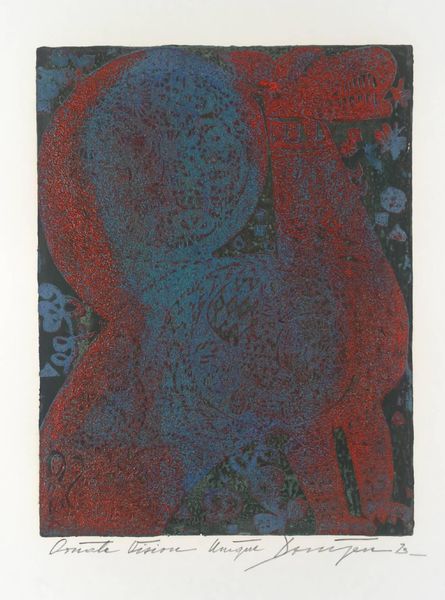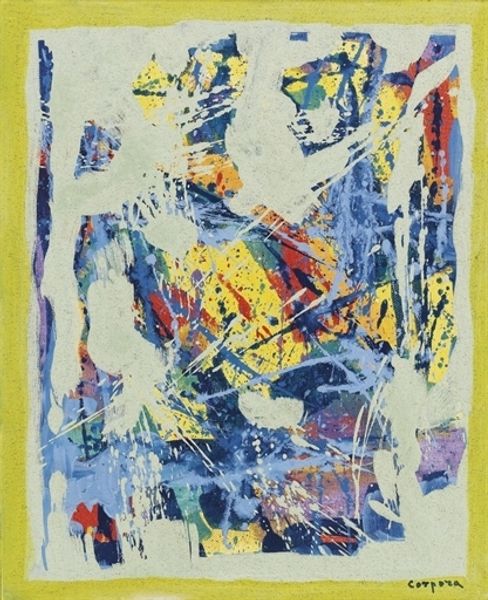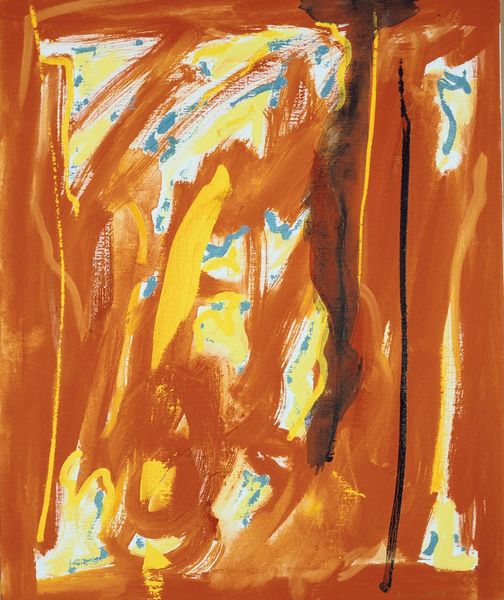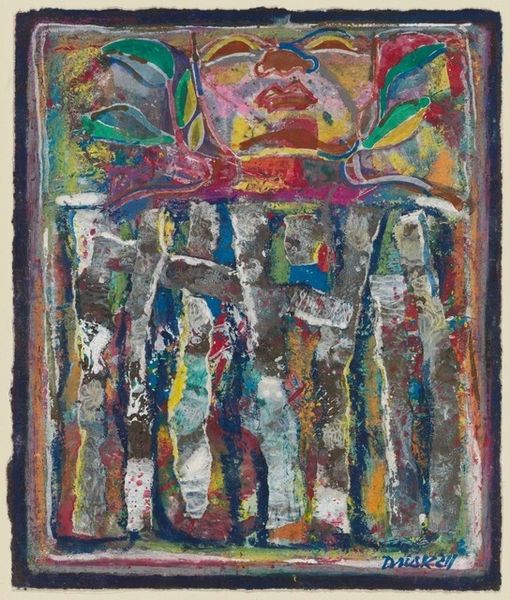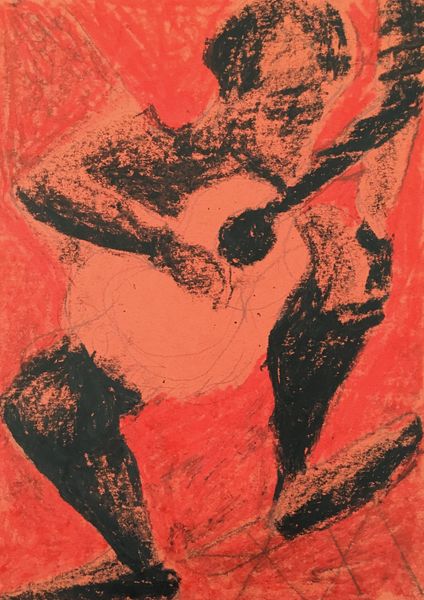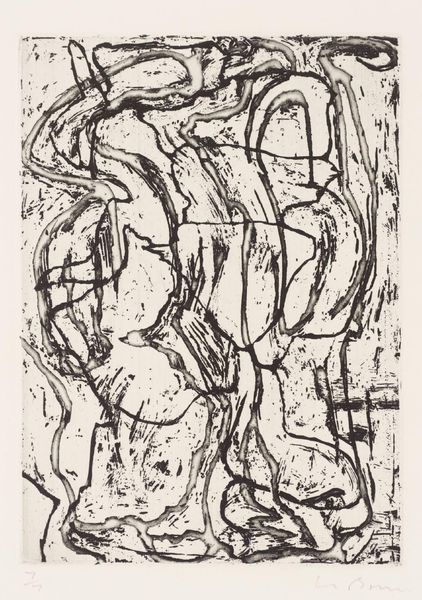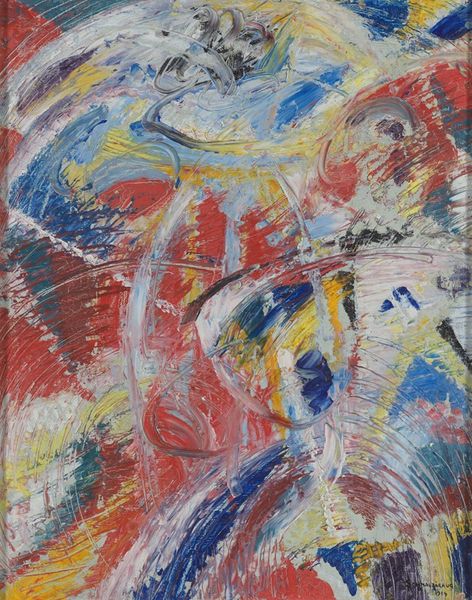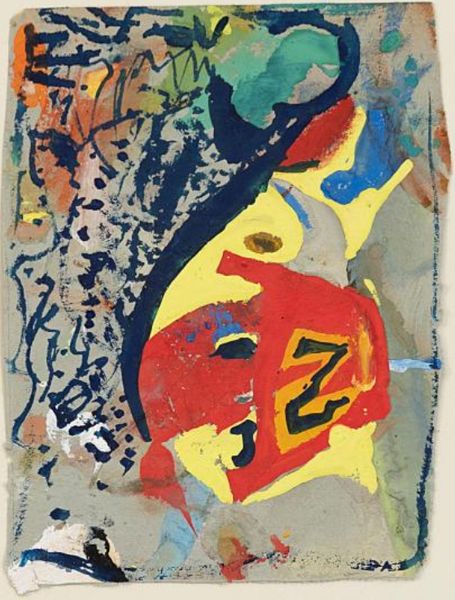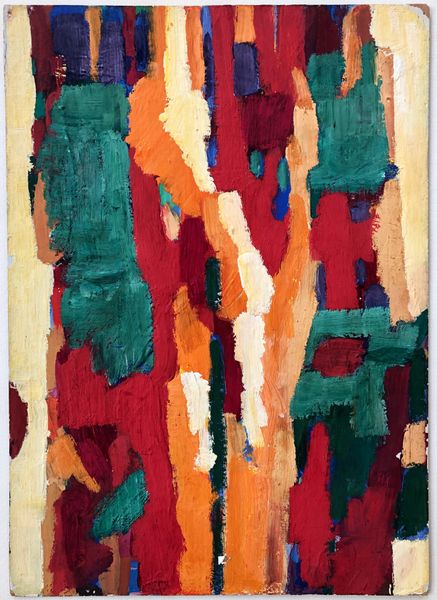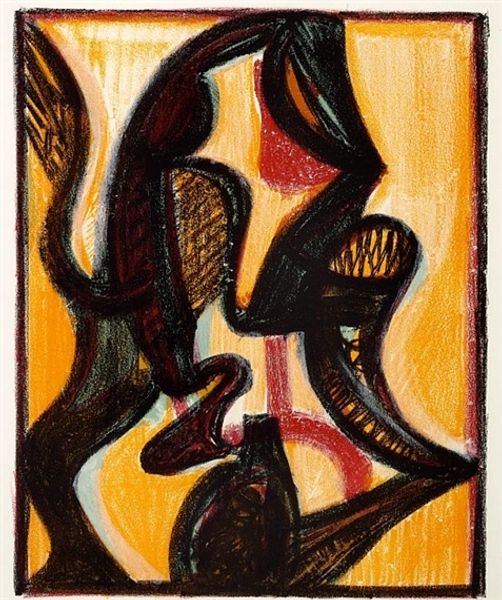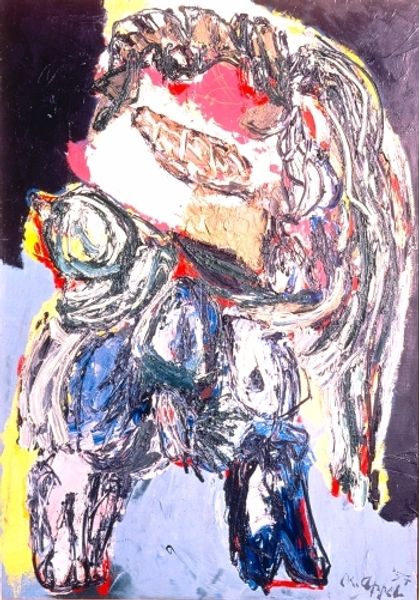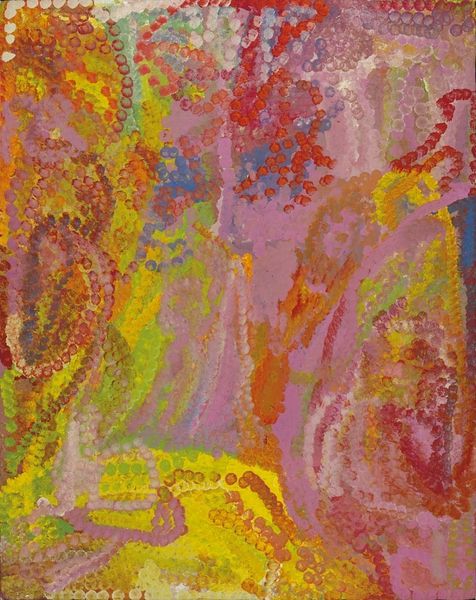
Dimensions: left panel: 115.57 × 91.44 cm (45 1/2 × 36 in.) image (irregular): 105.73 × 83.82 cm (41 5/8 × 33 in.) overall: 115.57 × 274.96 cm (45 1/2 × 108 1/4 in.)
Copyright: National Gallery of Art: CC0 1.0
Curator: Immediately, the vibrant color of this work is really exciting! It's Jim Dine’s mixed media monoprint "The Summer," created in 1992. What's your first take? Editor: Energetic! It throws you right into the season itself. Feels a bit like looking at summer through a heat haze, a figurative subject emerging out of brushstrokes. There is some figurative dimension with some struggle there, hidden but perceivable. Curator: Right, and when we look at Dine’s use of the monoprint, combined with his approach to the image, there is this direct relationship with color production, materiality, surface. The marks are printed and immediate. They almost dissolve. Editor: That dissolution is interesting... the sense of losing and then finding form. See that central figure, almost maternal, caught in a swirl of warmth and a kind of delicious abstraction. But I’m interested, is that relationship with materiality intentional? Curator: Absolutely. Dine's method rejects conventional art hierarchies by highlighting printmaking, which in the past has frequently been undervalued. The materials—inks, paper, printing—are just as significant as the figurative element. Dine even plays with expectations by creating mixed-media works in a method, elevating "low" art practices, and forcing us to consider labor and the consumption of imagery. Editor: I suppose there’s a subversive tenderness there— in focusing so attentively to production. And then the composition, which, through its title, invites a meditation on the summer... does that relate? Does it deepen the experience? Curator: Dine pushes those contradictions to investigate more significant conceptual and social issues even with his choice of summer as subject, asking how meaning and experience are produced materially and artistically, blurring divisions between subject, making, and experiencing, so yes, precisely so. Editor: The beauty of art, right? Thanks to its materiality and subject and energy it is full of warm invitation and interesting conceptual complexities. Curator: Exactly. It allows the artist to create the familiar in an unexpectedly material manner.
Comments
No comments
Be the first to comment and join the conversation on the ultimate creative platform.
